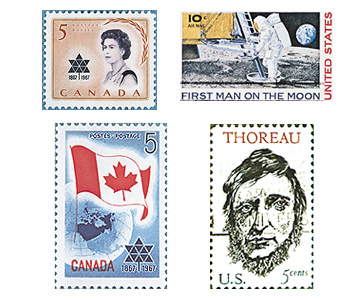Stamp is an official mark or seal or a small printed piece of paper with one glued surface. Many documents are not legal until they carry a government stamp. For example, the government may require the payment of a one-dollar tax on a real-estate deed. The collector pastes a revenue stamp of one dollar in value on the deed, as proof that the tax was paid.

The Dutch levied the first stamp taxes in 1624. In 1694, the English used the stamp plan to raise money for carrying on a war with France. The British Stamp Act of 1765 was one of the direct causes of the American colonial revolt against the United Kingdom.
In 1814, stamp taxes became a part of the fiscal system of the United States. In 1862, the American Congress passed an important stamp law. The law required that legal papers and certain kinds of packages carry government stamps. The purpose of the law was to raise funds to pay some of the expenses of the American Civil War (1861-1865). The law was repealed when revenue was no longer needed to pay war expenses. New stamp laws, passed during the Spanish-American War (1898) and World War I (1914-1918), helped raise money to pay the costs of war.
Government stamps for raising money are known as internal revenue stamps. Until 1959, the United States government required that such stamps be placed on luxuries such as tobacco and liquor. Some states also tax these luxuries, and require that they be stamped.
During World War II (1939-1945), the United States government offered war savings stamps for sale to citizens. These stamps raised funds for the war. The ration stamp also came into use during the war. Its purpose was to divide food and clothing equally among civilians. However, people in the United States are probably most familiar with the various forms of postage stamps.
